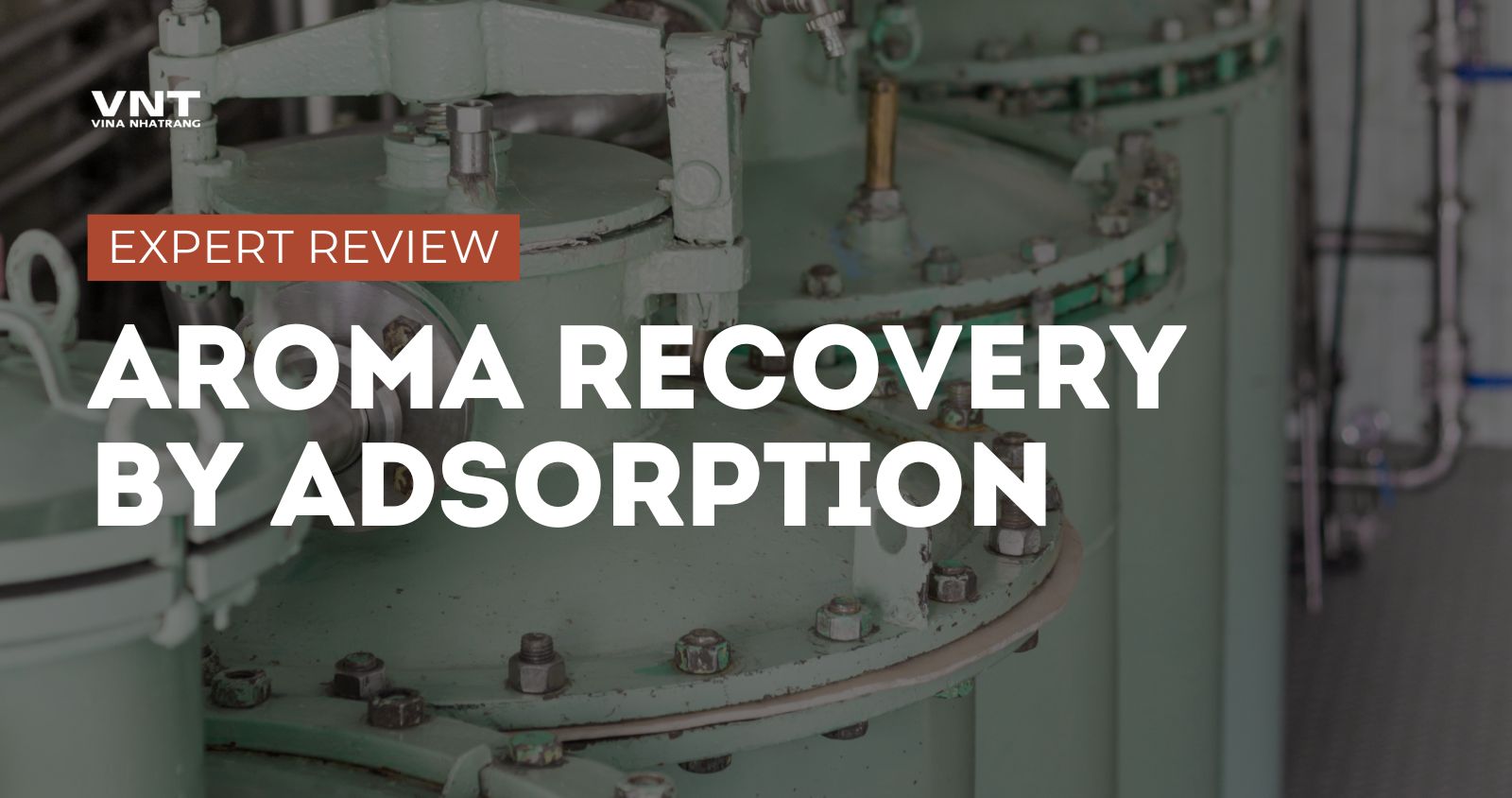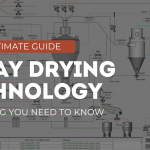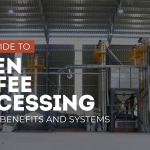One of the most effective and innovative methods for aroma recovery is adsorption. This technique involves using specially designed solid materials (adsorbents) that selectively bind and capture aroma compounds from gas or liquid streams. Unlike distillation or evaporation, adsorption operates at low temperatures, making it ideal for preserving heat-sensitive volatiles. From fruit juice and coffee processing to dairy products and essential oils, adsorption is transforming how industries recover and retain natural aromas.
This article explores the principles of adsorption, key industrial applications, leading technologies, advantages, limitations, and the future of aroma recovery using adsorption.
Understanding Aroma Recovery by Adsorption
What is Adsorption?
Adsorption is a process in which molecules (aroma compounds) adhere to the surface of a solid material (adsorbent) without penetrating it. This differs from absorption, where molecules dissolve into the bulk of the material. The strength of the interaction between the adsorbent and the aroma compounds determines how effectively the aroma is captured and later released.
Types of Adsorption in Aroma Recovery
- Physical Adsorption (Physisorption):
- Involves weak van der Waals forces between the adsorbent and aroma compounds.
- Easily reversible, allowing for controlled aroma release back into the product.
- Used in food, beverage, and essential oil industries.
- Chemical Adsorption (Chemisorption):
- Involves stronger chemical bonds between the aroma compounds and the adsorbent.
- Less commonly used in aroma recovery, as it may alter aroma integrity.
By choosing the right adsorbent material, manufacturers can selectively capture desirable volatile compounds while leaving unwanted elements behind.
Industrial Applications of Adsorption in Aroma Recovery
1. Fruit Juice & Beverage Processing
Challenges:
- Many fruit juices undergo pasteurization and concentration, leading to the loss of delicate aroma compounds.
- Conventional evaporation techniques strip away fruit esters, aldehydes, and alcohols, reducing natural freshness.
Adsorption Solution:
- Hydrophobic polymer adsorbents selectively capture volatile aromas from evaporated juice vapors.
- The recovered aroma is then reintroduced into the final juice concentrate, restoring its original sensory profile.
✅ Example:
- Orange juice aroma recovery using adsorption before concentration ensures that lost citrus notes (e.g., limonene, valencene) are preserved.
2. Coffee & Tea Processing
Challenges:
- Instant coffee and tea production (via freeze-drying or spray-drying) leads to the loss of key volatile compounds.
- Loss of volatiles results in flat-tasting products without a rich aroma.
Adsorption Solution:
- Activated carbon and porous resins selectively capture aroma volatiles from coffee extraction vapors.
- The aroma is collected, stored, and reinfused into the final powder before packaging.
✅ Example:
- Supercritical CO₂ extraction with adsorption columns is used in premium instant coffee production to retain fresh-brewed flavors.
3. Alcoholic Beverages & Wine Processing
Challenges:
- Alcohol removal (for low-alcohol and non-alcoholic wines) often results in the loss of esters and fruity volatiles that define the drink’s character.
- Traditional methods (such as vacuum distillation) strip aromas along with ethanol.
Adsorption Solution:
- Polymeric resins and activated carbon selectively capture wine esters and terpenes from the vapor phase.
- The recovered aromas are reintroduced into low-alcohol wines to maintain their original bouquet.
✅ Example:
- Membrane adsorption systems are used in dealcoholized wines to ensure minimal loss of fruity and floral notes.
4. Dairy & Fermented Products
Challenges:
- Fermented dairy products (such as cheese and yogurt) develop complex flavors over time, but pasteurization can strip away key volatiles.
- Cooked flavors can develop due to heat treatment.
Adsorption Solution:
- Zeolite and styrene-divinylbenzene resins selectively adsorb undesirable off-flavors while retaining the beneficial ones.
- The captured aromas are later blended back into the dairy product to ensure consistent flavor.
✅ Example:
- Cheese aging aroma recovery using adsorption helps maintain nutty and creamy flavors lost during processing.
5. Perfume & Essential Oil Extraction
Challenges:
- Essential oils contain highly volatile fragrance molecules that are lost during steam distillation.
- Synthetic fragrance recovery methods alter the natural scent profile.
Adsorption Solution:
- Silica gel and activated charcoal are used to trap and release delicate floral and citrus esters during extraction.
- This ensures a more authentic and concentrated aroma in perfumes and essential oils.
✅ Example:
- Rose oil adsorption systems capture delicate volatiles that would otherwise be lost in traditional distillation.
Key Technologies in Adsorption-Based Aroma Recovery
The effectiveness of adsorption in aroma recovery depends on the adsorbent material, system design, and desorption method used to capture and release volatile compounds. Different adsorption technologies have been developed to maximize aroma retention while ensuring energy efficiency and high selectivity. Below are some of the most commonly used adsorption-based aroma recovery systems, each designed for different industrial applications.
1. Fixed-Bed Adsorption Systems
Best for: Juice concentration, coffee extraction, essential oil recovery
Fixed-bed adsorption is one of the most widely used technologies in aroma recovery. This system consists of a column packed with an adsorbent material, through which an aroma-laden gas or liquid passes. The volatile compounds are selectively trapped on the surface of the adsorbent, while the purified gas or liquid exits the system.
How It Works:
- Aroma-rich vapor or liquid is introduced into the adsorption column.
- The adsorbent selectively captures volatile aroma compounds, allowing non-aromatic components to pass through.
- Once the adsorbent reaches saturation, the system undergoes regeneration (desorption) to release the captured aromas.
- The recovered aroma is then collected and reintegrated into the product.
✅ Advantages:
- Highly efficient at separating volatile aromas.
- Simple and cost-effective for small-to-medium-scale operations.
- Easy integration into existing food and beverage processing lines.
❌ Limitations:
- Requires periodic regeneration, leading to potential downtime.
- Lower capacity for large-scale industrial applications.
✅ Used in:
- Coffee aroma recovery before freeze-drying.
- Citrus oil extraction from juice concentrate vapors.
- Herbal and botanical extract processing.
2. Moving-Bed Adsorption Columns
Best for: Large-scale beverage processing, dairy aroma capture, and industrial perfume extraction
Moving-bed adsorption systems improve on fixed-bed designs by ensuring continuous operation. Instead of a stationary adsorbent, these systems use a slowly moving adsorbent bed, allowing for simultaneous adsorption and desorption without stopping the process.
How It Works:
- Aroma-rich vapor enters the moving-bed column, where it interacts with the flowing adsorbent particles.
- As the adsorbent moves downward, it captures volatile aroma compounds.
- Simultaneously, the adsorbent at the bottom is regenerated and returned to the top, maintaining continuous operation.
- The recovered aroma compounds are collected in a concentrated phase for reintegration.
✅ Advantages:
- Continuous processing, reducing downtime.
- Higher efficiency for large-scale aroma recovery.
- More effective regeneration, minimizing adsorbent replacement costs.
❌ Limitations:
- Requires complex control systems for adsorbent movement.
- Higher initial investment compared to fixed-bed systems.
✅ Used in:
- Large-scale juice processing (apple, berry, and tropical fruits).
- Whey protein processing in dairy industry.
- Perfume distillation for premium fragrance production.
3. Membrane Adsorption Hybrid Systems
Best for: Wine aroma retention, beer de-alcoholization, and premium juice processing
Membrane adsorption combines adsorption with membrane separation, creating a highly selective filtration system for volatile compounds. This hybrid technology allows manufacturers to recover delicate aromas while removing unwanted volatiles like ethanol or off-flavors.
How It Works:
- Aroma-laden vapor or liquid is passed through a membrane that selectively allows certain compounds to pass.
- The filtered aroma compounds are then directed toward an adsorbent material, which captures and concentrates them.
- The captured aroma is later released and reintegrated into the product.
✅ Advantages:
- Highly selective—only desired aroma compounds are captured.
- Effective for separating ethanol from wine, beer, and juices.
- Low energy consumption compared to conventional distillation.
❌ Limitations:
- Requires specialized membrane technology and periodic cleaning.
- Higher equipment costs compared to traditional adsorption.
✅ Used in:
- De-alcoholized wines and spirits (removing ethanol while retaining key esters).
- High-end fruit juices where aroma balance is critical.
- Alcohol-free beer production while maintaining hop aromas.
4. Zeolite Molecular Sieve Adsorption
Best for: Dairy aroma capture, fermented product processing, and air-based aroma recovery
Zeolites are crystalline aluminosilicate materials with highly porous structures, making them effective for adsorbing specific aroma compounds based on molecular size. This technology is particularly useful for removing off-flavors from dairy and fermented products.
How It Works:
- The aroma-rich gas or liquid is passed through a zeolite-packed column.
- The zeolite traps specific molecules based on their size and polarity, allowing selective aroma capture.
- The aroma-rich zeolite undergoes heat or pressure treatment to release the captured compounds.
- The recovered aroma is collected and reintegrated into the product.
✅ Advantages:
- Highly specific—can target individual aroma molecules.
- Effective for removing undesirable volatiles.
- Works well in gas-phase aroma recovery (e.g., vacuum aroma stripping).
❌ Limitations:
- Expensive material costs.
- Requires precise temperature control for regeneration.
✅ Used in:
- Cheese and yogurt aroma recovery.
- Fermentation by-product separation.
- Beer and wine off-flavor removal.
5. Steam-Stripping & Adsorption Hybrid Systems
Best for: High-value essential oils, botanical extracts, and fragrance industry
This system combines steam distillation with adsorption, allowing manufacturers to recover highly concentrated aromas from plant-based products. By using adsorption to capture volatiles that escape steam processing, this method preserves fragile essential oil compounds.
How It Works:
- Steam is used to liberate volatile aroma compounds from a plant material.
- The escaping vapors pass through an adsorption bed, trapping key compounds.
- The captured aroma is later released using controlled desorption techniques.
✅ Advantages:
- Retains delicate plant-based aromas that would be lost in conventional steam distillation.
- Highly concentrated aroma recovery.
- Works well for fragrance and essential oil production.
❌ Limitations:
- Higher energy use due to steam processing.
- Requires highly specific adsorbents for different plant materials.
✅ Used in:
- Rose oil and lavender extraction.
- Vanilla and spice aroma retention.
- Herbal tea and botanical extracts.
Comparison of Key Adsorption Technologies
| Technology | Best For | Main Advantage | Key Limitation |
|---|---|---|---|
| Fixed-Bed Adsorption | Coffee, tea, juice aroma retention | Simple & cost-effective | Requires periodic regeneration |
| Moving-Bed Adsorption | Large-scale juice & dairy processing | Continuous operation | High initial investment |
| Membrane Adsorption Hybrid | Wine, beer, high-end juice | Highly selective aroma capture | Expensive membranes |
| Zeolite Molecular Sieve | Dairy, fermentation, beer | Selective molecule adsorption | High material costs |
| Steam-Stripping & Adsorption | Essential oils, perfume | Preserves delicate aromas | High energy use |
➡️ Next reading: Aroma Recovery by Pervaporation
Conclusion
Adsorption-based aroma recovery is revolutionizing how industries preserve and enhance flavors, ensuring that food, beverages, and fragrances retain their authentic sensory characteristics. By leveraging advanced technologies such as fixed-bed systems, moving-bed adsorption, membrane filtration hybrids, and zeolite molecular sieves, manufacturers can selectively capture, concentrate, and reintegrate valuable volatile compounds with precision.
References: Information sourced from Karlsson & Trägårdh (1997) on aroma recovery during beverage processing.




